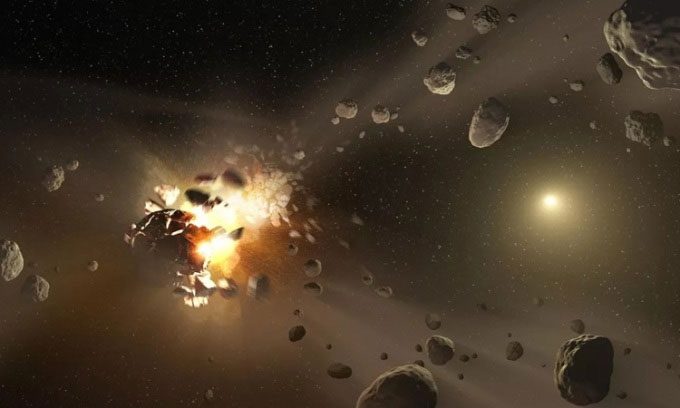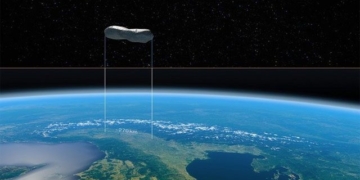In 2022, there were 126 cases of asteroids approaching Earth, while from the beginning of 2023 to now, scientists have recorded 50 cases.
NASA shared a graphic estimating how many asteroids could potentially collide with Earth each year, Live Science reported on August 8. On average, once a year, a 4-meter asteroid will pass within 2,600 kilometers of Earth’s surface. A few thousand kilometers is quite a large distance for an object only a few meters in size, and most asteroids mentioned in the media fly by at much greater distances. Astronomers classify anything that passes closer to Earth than the Moon (about 30,000 kilometers) as “near-Earth.”

There are about half a billion large asteroids orbiting the Sun. (Photo: NASA).
Next, NASA examined large asteroids with diameters over one kilometer. Each such collision could threaten civilization and occurs approximately every 500,000 years. We could experience thousands of smaller asteroids passing by (closer than the Moon) during that time. One such event is expected to occur in 2029 when asteroid 153814 (2001 WN5) will pass by Earth at a distance of 248,700 kilometers.
Researchers estimate that about 95% of asteroids larger than one kilometer have been detected, and they regularly scan the sky for the remaining 5%. When a new asteroid is found, astronomers will intensify their observations to assess the risk to Earth.
Earth frequently undergoes collisions with small asteroids but is rarely struck by larger ones. In most cases, smaller asteroids break apart significantly when entering Earth’s atmosphere, often not reaching the surface. They usually create spectacular fireballs. Most of them burn up in the atmosphere.
Currently, no object poses a threat of colliding with Earth. Technology has advanced to the point where humanity can take action if faced with a high-risk asteroid. Recently, NASA’s DART mission successfully crashed a spacecraft into an asteroid, altering its trajectory.
Asteroids are remnants from the formation of the Solar System. Approximately half a billion asteroids larger than 4 meters orbit the Sun, traveling through the Solar System at a speed of about 30 kilometers per second, equivalent to Earth’s speed. Asteroids pose multiple threats to Earth. About 65 million years ago, life on Earth was wiped out due to an asteroid collision, leading to the extinction of most dinosaurs. Even a 4-meter object moving at 60 kilometers per hour can be very dangerous. There are many smaller asteroids, and they cause significantly less damage.





















































